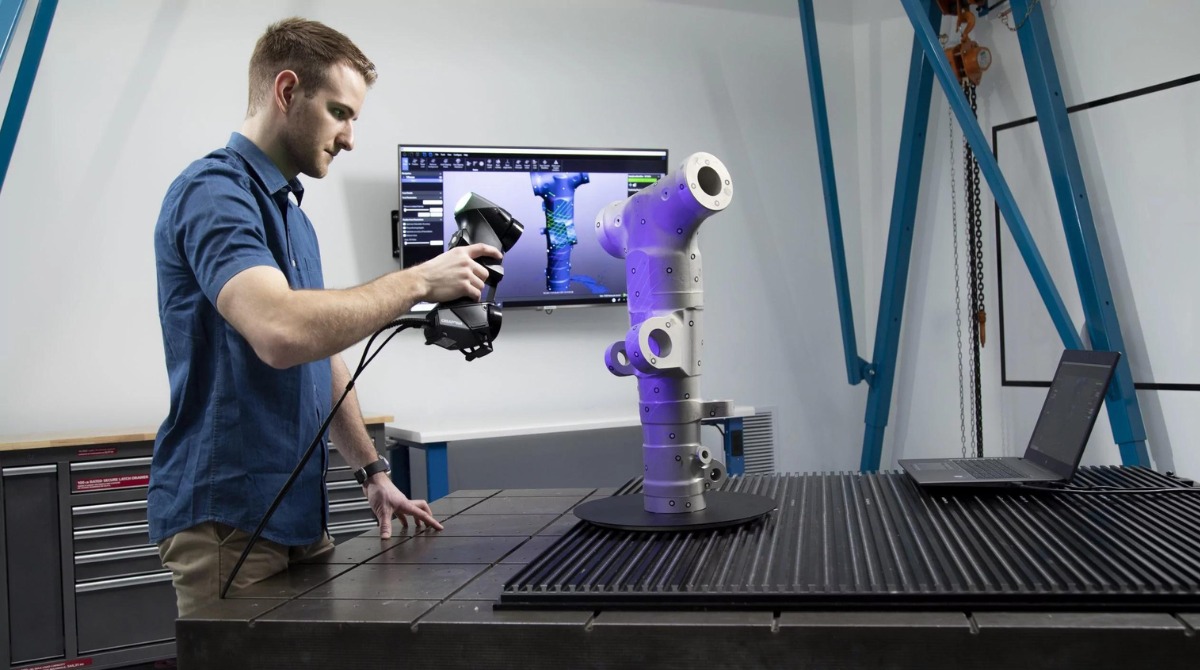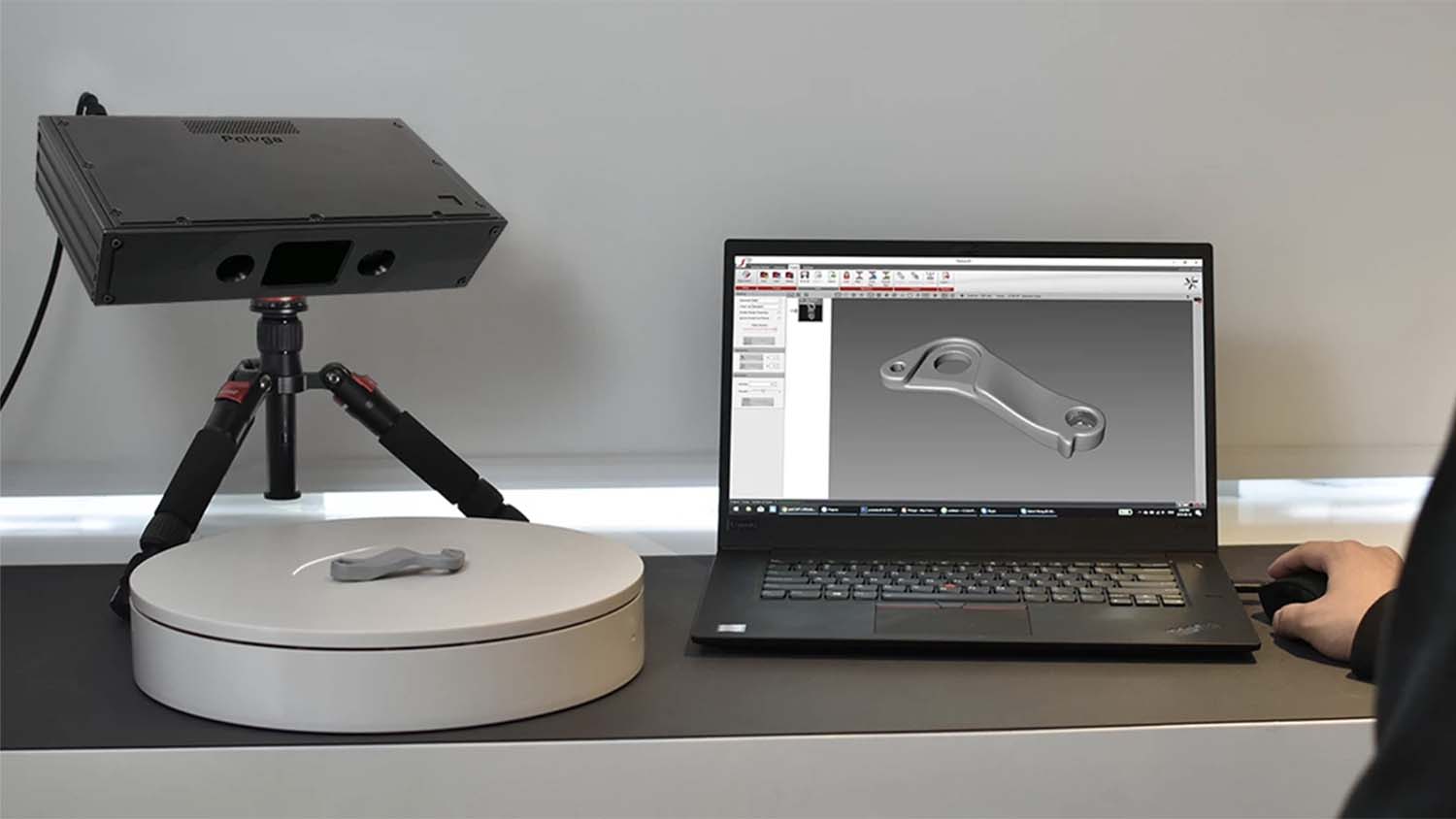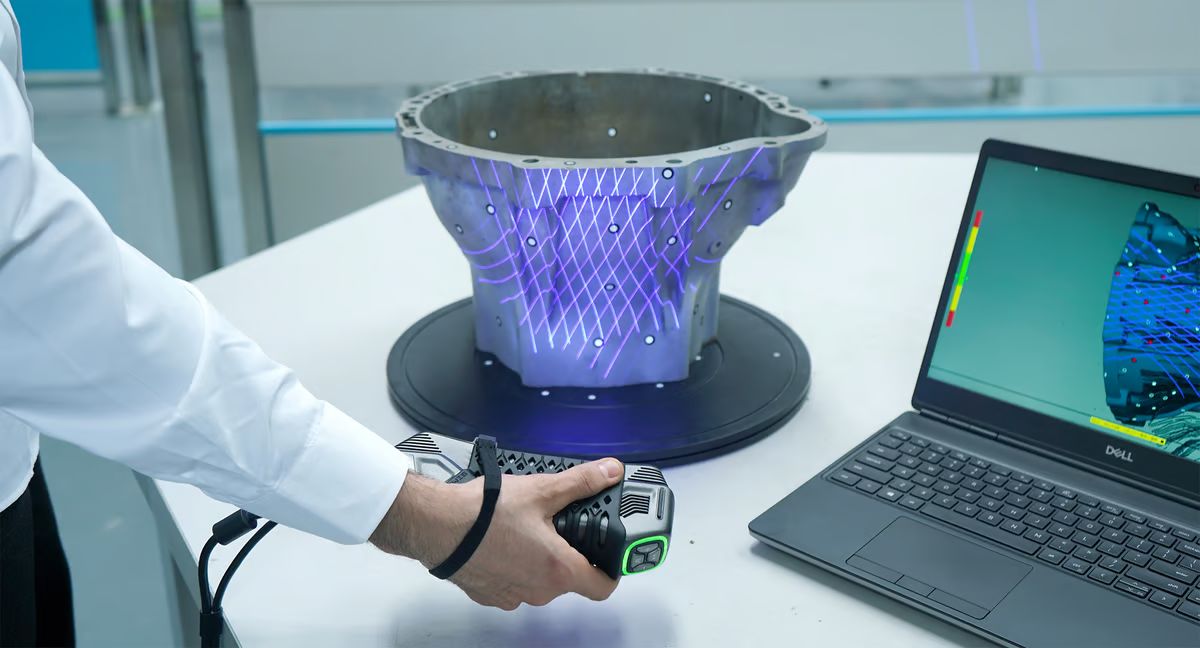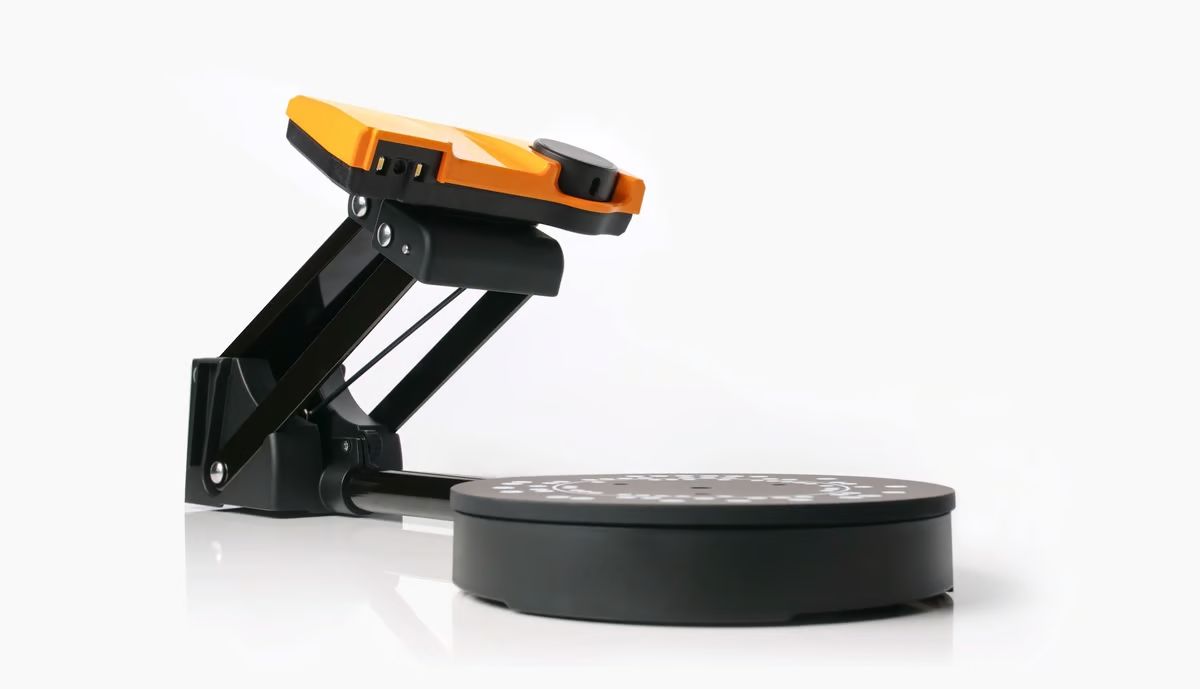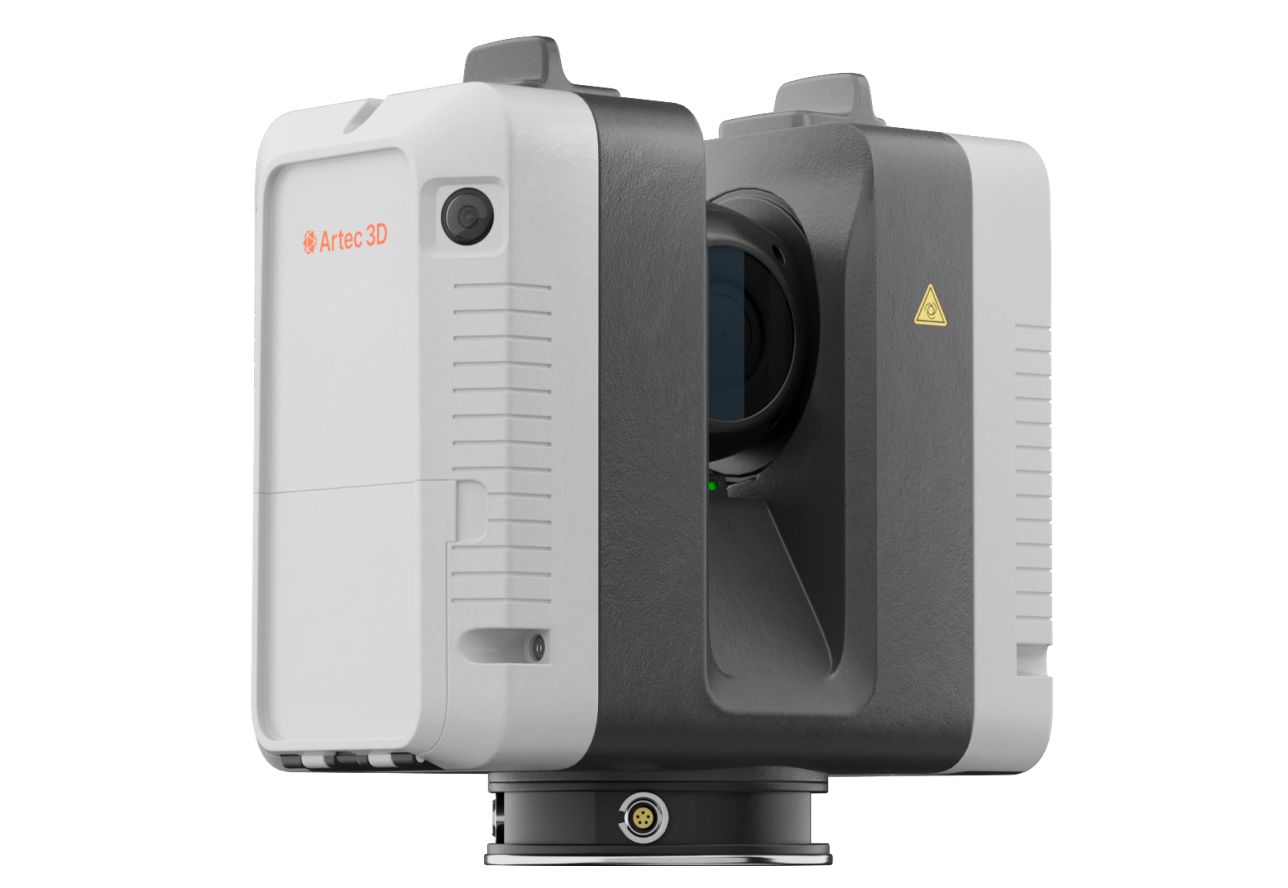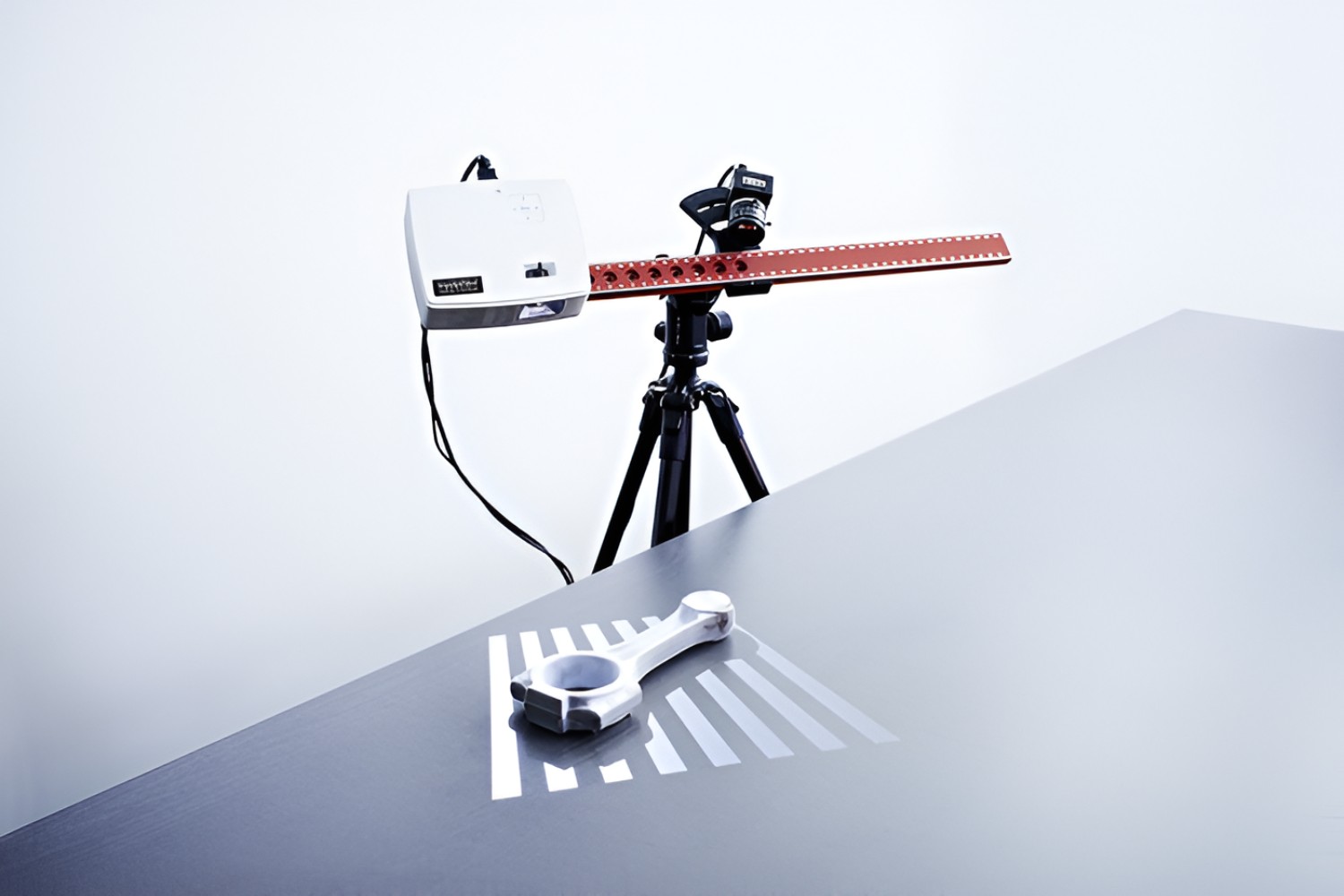Introduction
Welcome to the fascinating world of 3D scanning! In recent years, 3D scanning technology has revolutionized various industries, from architecture and manufacturing to healthcare and entertainment. This innovative technology allows us to capture real-world objects and convert them into digital models with remarkable precision and detail. Whether you’re a professional in a specialized field or simply curious about the possibilities of 3D scanning, this article will provide you with a comprehensive understanding of what 3D scanners are and how they work.
As the name suggests, a 3D scanner is a device that captures the geometry and appearance of an object by collecting data points from its surface. These data points are then processed to create a three-dimensional digital representation of the object, often referred to as a 3D model. This model can be manipulated, analyzed, and reproduced using specialized software and 3D printing technology.
Over the years, 3D scanners have evolved significantly in terms of accuracy, speed, and versatility. Today, there are various types of 3D scanners available, each with its own unique features and applications. From handheld scanners that offer portability and ease of use to advanced stationary scanners capable of capturing intricate details, there is a wide range of options to choose from based on your specific needs and budget.
So, how exactly does a 3D scanner work?
In the next section, we will delve into the working principles of 3D scanners and explore the different types available in the market. Whether you’re interested in using 3D scanning for reverse engineering, quality control, or artistic creations, understanding the fundamentals of this technology is essential to make informed decisions and achieve the best possible results.
What is a 3D Scanner?
A 3D scanner is a device that captures the physical characteristics of an object and creates a digital representation of it in three dimensions. Instead of relying on traditional methods such as measuring or drawing, a 3D scanner uses advanced optical or laser technology to collect data points from the surface of an object. These data points are then processed to create a highly detailed and accurate digital model, allowing for further analysis, modification, or replication of the object.
3D scanners can be classified into two main categories: contact and non-contact scanners. Contact scanners require physical contact with the object being scanned and are often used for small, intricate objects or surfaces that are difficult to capture using non-contact methods. Non-contact scanners, on the other hand, utilize technologies such as laser, structured light, or photogrammetry to capture data without any direct contact with the object.
One of the key advantages of 3D scanning is its ability to capture the geometry, texture, and color information of objects with a high level of precision. This makes it an essential tool in fields such as industrial design, product development, quality control, and heritage preservation. For example, in architecture and construction, 3D scanners are used to create accurate as-built models of existing structures, enabling architects and engineers to plan renovations or additions with greater accuracy.
3D scanners are also widely employed in the healthcare industry, particularly in areas such as orthotics, prosthetics, and dentistry. By scanning a patient’s body or specific body part, healthcare professionals can create custom-made devices or treatment plans that perfectly match the individual’s unique needs.
Furthermore, 3D scanning plays a significant role in the entertainment and gaming industries, where it is used to capture actors’ movements and expressions to create realistic computer-generated characters. This technology is also utilized in virtual reality (VR) and augmented reality (AR) applications to generate immersive experiences.
Overall, a 3D scanner is a powerful tool that opens up a world of creative possibilities and practical applications. Whether used for reverse engineering, quality control, product design, or artistic creations, 3D scanning technology continues to push boundaries and revolutionize industries across the globe.
Types of 3D Scanners
There are several types of 3D scanners available in the market, each with its own unique technology and features. Understanding the different types of 3D scanners will help you choose the most suitable option for your specific needs. Here are some of the most commonly used types:
- Laser Scanners: Laser scanners use laser beams to capture precise measurements of an object’s surface. These scanners emit a laser beam onto the object, and sensors measure the reflected beam to calculate the distance between the scanner and the object’s surface. Laser scanners are known for their high accuracy and are commonly used in industrial applications, such as quality control and metrology.
- Structured Light Scanners: Structured light scanners project a pattern of light onto the object and use cameras to capture how the pattern deforms. By analyzing the deformation of the projected pattern, the scanner calculates the object’s shape and geometry. Structured light scanners are ideal for capturing complex shapes and are often used in fields such as art, archaeology, and cultural preservation.
- Photogrammetry: Photogrammetry scanners create 3D models by analyzing multiple photographs taken from different angles. The scanner uses algorithms to match common points in the photographs and calculate the object’s shape and dimensions. Photogrammetry scanners are popular in fields like architecture, where accurate as-built models and site surveys are required.
- Contact Scanners: Contact scanners, also known as touch scanners, physically touch the surface of the object being scanned. These scanners typically use a probe or stylus to collect data points. Contact scanners are precise and suitable for small, intricate objects, but they can be time-consuming for larger objects.
- Handheld Scanners: Handheld scanners offer flexibility and portability. They are compact devices that can be moved around the object being scanned. Handheld scanners can use various technologies, such as laser or structured light, and are commonly used in archaeology, conservation, and forensic investigations where mobility is crucial.
It’s important to consider the size of the objects you plan to scan, the level of detail required, and your budget when choosing a 3D scanner. Each type of scanner has its own advantages and limitations, so understanding these factors will help you make an informed decision to ensure the best results for your specific application.
How Does a 3D Scanner Work?
3D scanners utilize various technologies and techniques to capture the geometry and appearance of objects. While the specific workings may vary depending on the type of scanner, the fundamental principles remain similar. Here is a general overview of how a 3D scanner works:
Firstly, the 3D scanner emits a light source, such as lasers or structured light patterns, onto the object being scanned. These emitted rays or patterns interact with the object’s surface in different ways.
In the case of laser scanners, they emit laser beams onto the object, and sensors measure the time it takes for the laser beam to bounce back. By calculating the distance and angles between the scanner and the object’s surface, the scanner can determine the spatial coordinates of numerous points on the object’s surface.
Structured light scanners, on the other hand, project a pattern of light onto the object’s surface. The scanner uses one or more cameras to capture the deformation of the projected pattern caused by the object’s shape. By analyzing these deformations, the scanner can reconstruct the object’s geometry in three dimensions.
Another technique commonly used in 3D scanning is photogrammetry. This method involves taking multiple photographs of the object from different angles. Software analyzes these photographs and identifies common points in the images. By triangulating these common points, the scanner can calculate the object’s shape and dimensions.
Once the data points are captured, they are processed and converted into a digital 3D model. This involves aligning the individual data points to create a cohesive representation of the object’s surface. The software then fills in any gaps or holes in the data to ensure a complete and accurate model.
The final step involves refining the 3D model and optimizing it for further uses. This may include smoothing the surface, reducing noise or errors, and optimizing the file size for efficient storage and transfer.
The resulting 3D model can be saved in various file formats, such as STL or OBJ, which can be further processed and manipulated using specialized software. The model can be analyzed, modified, or 3D printed to create physical replicas of the object.
It’s important to note that the accuracy and level of detail achieved by a 3D scanner depend on several factors, including the scanner’s technology, the object’s properties, and the scanning conditions. Factors such as lighting, reflectivity, and texture can impact the scanning process and the quality of the resulting 3D model.
Overall, the process of 3D scanning is a fascinating combination of physics, technology, and computer algorithms that allows us to capture the real world in a digital form, opening up endless possibilities for innovation and creativity.
Applications of 3D Scanners
3D scanners have found applications in a wide range of industries and fields, revolutionizing traditional methods of design, analysis, and manufacturing. Here are some key areas where 3D scanners are extensively utilized:
- Product Design and Development: 3D scanners are used in product design and development to capture real-world objects and convert them into digital models. These models can be used as a basis for creating prototypes, performing virtual testing, and refining designs before production. This allows for faster and more cost-effective iterations, reducing time-to-market and improving product quality.
- Engineering and Manufacturing: 3D scanning plays a crucial role in engineering and manufacturing processes. It enables the accurate measurement and analysis of complex components, ensuring precise fit and alignment. Additionally, 3D scanners are used for quality control, allowing manufacturers to verify the dimensional accuracy of finished products, identify defects, and maintain consistent quality standards.
- Art and Cultural Heritage: 3D scanning technology is widely employed in the preservation and restoration of artworks and cultural artifacts. It allows for the creation of detailed digital replicas, ensuring the preservation of cultural heritage and providing access to precious objects for study and research. Furthermore, 3D scanning enables the replication of artworks, making them accessible to a wider audience and allowing for precise reproductions.
- Medical and Healthcare: In the medical field, 3D scanners are used for various applications, such as creating custom orthotics and prosthetics. By scanning a patient’s body or specific body parts, healthcare professionals can design and manufacture personalized medical devices that offer a perfect fit and optimal functionality. 3D scanning is also utilized in dental applications, enabling the creation of accurate models for orthodontics, implant placement, and prosthodontics.
- Reverse Engineering: 3D scanners are valuable tools for reverse engineering, which involves capturing the geometry of an existing object and creating a digital model. This process is vital for recreating or modifying parts, especially when original designs or documentation are unavailable. Reverse engineering using 3D scanners allows for accurate reproduction of components, facilitating repairs, upgrades, and replacements.
- Architecture and Construction: 3D scanners are employed in architecture and construction for various purposes. They enable the creation of accurate as-built models of existing structures, facilitating renovation and remodeling projects. Additionally, 3D scanning aids in site analysis, generating detailed site surveys and terrain models to inform the design process. This technology also assists in prefabrication and construction quality control, ensuring precise alignment and measurements.
These are just a few examples of the vast applications of 3D scanners. The versatility and accuracy of this technology continue to expand its potential, making it an indispensable tool in numerous industries and driving innovation in diverse fields.
Advantages of Using a 3D Scanner
3D scanners offer numerous advantages that have revolutionized various industries and processes. Here are some key advantages of using a 3D scanner:
- Accuracy and Precision: 3D scanners capture highly detailed and accurate measurements of objects, ensuring precise representation in the digital model. This level of accuracy is crucial in industries such as engineering, manufacturing, and quality control, where precise measurements are essential for proper fit, alignment, and consistency.
- Ease of Data Capture: 3D scanners provide a faster and more efficient method of capturing object data compared to traditional manual measurements or drawings. With a 3D scanner, objects can be scanned quickly, automatically collecting thousands or even millions of data points in a matter of seconds. This saves time and effort, allowing for faster data acquisition and analysis.
- Digital Representation: By creating a digital model of an object, 3D scanners enable further analysis, modification, and replication. Digital models can be easily shared, manipulated, and integrated into other digital workflows. This digital representation simplifies collaboration, design iterations, and documentation.
- Non-destructive Method: 3D scanning is a non-contact method that does not require physical contact or alteration of the object being scanned. This non-destructive nature minimizes the risk of damaging or altering the integrity of valuable or delicate objects, making it ideal for capturing artifacts, artwork, or historical objects.
- Time and Cost Savings: The speed and efficiency of 3D scanners translate to time and cost savings in various applications. Faster data acquisition and accurate measurements mean reduced project timelines and increased productivity. Additionally, 3D scanning enables rapid prototyping, allowing for quick iterations and reducing the need for expensive physical prototypes.
- Enhanced Visualization and Analysis: 3D scanners provide a visual representation of objects with realistic shapes and textures. These digital models can be viewed from different angles, analyzed, and manipulated in real-time. This enhanced visualization aids in design evaluation, error identification, and simulation, enabling better decision-making and problem-solving.
- Improved Replication and Customization: With 3D scanning, objects can be accurately replicated or customized to meet specific requirements. Whether it’s creating personalized medical devices, replicating spare parts, or developing unique art pieces, 3D scanners facilitate precise reproduction, reducing reliance on manual craftsmanship and increasing customization possibilities.
These advantages highlight the transformative impact of 3D scanning technology. From increased accuracy and productivity to enhanced design possibilities, 3D scanners have become invaluable tools in a wide range of industries, enabling innovative solutions and driving progress.
Limitations of 3D Scanners
While 3D scanners offer numerous benefits and have transformed various industries, it’s important to be aware of their limitations. Understanding these limitations helps manage expectations and enables users to make informed decisions. Here are some common limitations of 3D scanners:
- Surface Reflectivity: Highly reflective or transparent surfaces can pose challenges for 3D scanners. Reflective surfaces, like polished metals or mirrors, can reflect the light back to the scanner, resulting in inaccurate measurements or data distortion. Similarly, transparent objects, such as glass or clear plastics, can refract or absorb the light, making it difficult for the scanner to capture accurate surface details.
- Complex Geometry: Objects with intricate or complex geometry may present difficulties for 3D scanners. Overhangs, deep crevices, or small cavities can obstruct the laser or light patterns, resulting in incomplete or distorted data capture. Scanners may struggle to capture these complex surfaces accurately, requiring multiple scans or additional post-processing to fill in gaps and ensure a complete model.
- Scanning Range and Size Limitations: 3D scanners have limitations on the scanning range and object size they can capture. Handheld scanners, for example, have a limited scanning range and may struggle to capture large objects or entire scenes. On the other hand, stationary scanners may require additional equipment or setups for scanning larger objects, limiting portability and increasing complexity.
- Scanning Speed: While modern 3D scanners offer faster data acquisition compared to traditional methods, the scanning process can still take time, especially for high-resolution and intricate objects. Scanning large or highly detailed objects can require a significant amount of scanning time and data processing, affecting overall project timelines and productivity.
- Cost: High-quality 3D scanning equipment can be expensive, especially for scanners that offer advanced features and capabilities. The cost of purchasing, maintaining, and operating 3D scanners may be a limiting factor for some individuals or organizations, particularly those with smaller budgets or limited resources.
- Specialized Training and Expertise: While 3D scanning technology has become more accessible, utilizing 3D scanners effectively often requires specialized training and expertise. The operation of the scanner, data processing, and model refinement may require knowledge of specialized software and data analysis techniques. This can add complexity and learning curves for users who are new to 3D scanning.
- Resolution and Accuracy Trade-off: Achieving high resolution and accuracy in 3D scanning often involves a trade-off between scanning speed and data quality. Scanning at higher resolutions can result in more accurate detail capture, but it may also increase scanning time and data size. It is important to strike a balance between resolution and speed depending on the specific requirements of the project.
Being aware of these limitations allows users to make informed decisions when using 3D scanners. By understanding the potential challenges and considering alternative methods or techniques, users can mitigate limitations and maximize the benefits of this technology.
Choosing the Right 3D Scanner for Your Needs
When selecting a 3D scanner, it’s important to consider your specific requirements and intended applications. Here are some factors to consider to help you determine the right 3D scanner for your needs:
- Scanning Technology: Understand the different scanning technologies available, such as laser, structured light, or photogrammetry, and determine which one is best suited for your specific applications. Consider factors like scanning range, resolution, and surface compatibility.
- Accuracy and Precision: Assess the required level of accuracy and precision for your projects. Depending on the industry and application, different scanners offer varying levels of accuracy. Determine the tolerances and measurements necessary for your work to select a scanner that meets your requirements.
- Object Size and Portability: Consider the size and portability needs of the objects you plan to scan. Handheld scanners offer greater portability and flexibility for smaller objects or on-site scanning, while stationary scanners may be better suited for larger objects or controlled environments.
- Speed and Efficiency: Assess the required scanning speed for your projects. Depending on the complexity and resolution needed, scanning time can vary. International factors like scan speed, processing time, and automation capabilities to determine which scanner can offer the most efficient workflow.
- Cost and Budget: Evaluate your budget and determine the cost of the scanner, including additional accessories, maintenance, and software. Consider the long-term investment and potential return on investment based on your intended applications.
- User-Friendliness: Consider the ease of use and user-friendliness of the scanner. Assess factors like software interfaces, training requirements, and technical support options, especially if you are new to 3D scanning technology.
- Integration and Compatibility: Ensure that the scanner is compatible with the software and systems you will be using for further processing and analysis of the 3D models. Consider interoperability with other software packages and file formats to avoid compatibility issues.
- Reviews and Recommendations: Research and read reviews from trusted sources or users who have used the specific scanner models you are considering. This can provide insights into the reliability, performance, and limitations of the scanners you are interested in.
- Future Scalability: Consider your future needs and potential expansion. Choose a scanner that allows for scalability in terms of additional features, upgrades, or compatibility with other devices or accessories as your requirements grow.
By thoroughly considering these factors, you can narrow down your options and select the 3D scanner that best aligns with your specific needs, ensuring optimal performance, efficiency, and return on investment for your projects.
Conclusion
3D scanners have transformed the way we capture and interact with the physical world. With their ability to create highly accurate and detailed digital models, 3D scanners have found applications in various industries, including manufacturing, healthcare, design, and entertainment.
In this article, we explored the fundamentals of 3D scanning, including what 3D scanners are, how they work, and the different types available. We also highlighted the wide range of applications where 3D scanners have made a significant impact, from product design and engineering to art preservation and reverse engineering.
We discussed the advantages of using 3D scanners, such as their accuracy, efficiency, and enhanced visualization capabilities. We also acknowledged the limitations of this technology, such as challenges with reflective surfaces, complex geometry, and cost considerations.
When it comes to selecting the right 3D scanner for your needs, we emphasized the importance of considering factors like scanning technology, accuracy, object size, and budget. By understanding your specific requirements and aligning them with the capabilities of different scanners, you can make an informed decision that ensures optimal results for your projects.
Ultimately, 3D scanners continue to drive innovation, streamline processes, and expand creative possibilities. As the technology advances further, we can expect to see even more applications and impactful uses of 3D scanners in the future.







